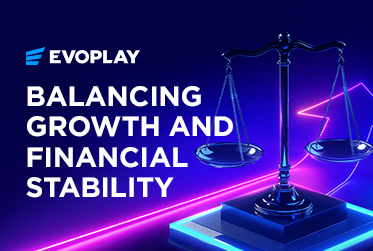In Part 1 of this article, we established that to grow your online casino audience today and tomorrow means embracing player trends and technologies found in mainstream gaming.
This audience is a single category consisting of various different groups – each with specific entertainment needs.
So, who exactly are these people? And how do you bring them to our world of iGaming?
The first thing to note, is that generally speaking the younger your (legal) potential audience, the less likely they are to gamble. The very people you’d love to have visit your online casino, are those who are the hardest to convince to do so.
No one said this was going to be easy!
But surveys also suggest that their reluctance to gamble is not determined by a general rejection of the idea of gambling. These people simply don’t find the available games and gameplay options appealing. Today’s casinos don’t, in short, reflect their entertainment needs.
To find out why, we need to break down your future audience by age-based categories.
Starting with Generation X (those born between 1960-79), we first see something that goes against many online casino design, visuals and game provision assumptions – gender bias. For Gen X, gender plays a fairly insignificant role in gaming needs.
Both male and female Gen X gamers prefer to play on their mobile devices rather than on a PC or a console. And both genders opt first for sports games, shooters, puzzle-based play, and the classic arcade games that they grew up playing in their youth.
Interestingly, however, research from the Entertainment Software Association has found that female gamers were more likely to play card and casino games compared to their male counterparts. Particularly poker and blackjack. Which is in stark contrast to what you often see when you visit a land-based casino and join the tables.
But whether male or female, Gen X wants a high-quality mobile experience above all else, and they want sports and shooters as their first choice in game type.
Next up is Generation Y, or Millennials as they are more commonly known – those who were born between 1980 and 1994. Just like the generation that came before them, playing on a mobile device is still the tool of preference, but for this age group gender leads game players down very different paths.
Girl Racers
Millennial men are far more likely to play shooters, action and sports games. Women tend to gravitate towards casual play and puzzle-based games. But women in this age group are also more likely to choose racing games over their male counterparts.
Elsewhere in their lives, Millennial gamers often have a ‘creative’ hobby – and this is usually connected to drawing or painting, singing or writing. Food for thought in terms of cross-over content for potential instant games or interactive video slots.
But whatever paths are taken, and whatever the gender who treads it, these are paths they take often.
Research from Nielsen shows that Millennials in the US are spend-easy and two in every three of them play video games regularly each month. Over 50% of those gamers are in full time employment, their household income is around $60,000, and 76% pay for movie/TV streaming services. The entertainment in their lives is already digitally based, and so they’re primed for an engaging iGame experience.
As highlighted in Part 1, eSports and viewing others play is important to this group – 71% of Millennials do so each month, spending approximately six hours per week watching others gaming, and they prefer to follow regularly scheduled events – meaning, their game-based entertainment is structured/planned, and not random. And as we’ll now see, it’s also something they happily hand over money for.
Millennials not only pay to play, they pay to watch. On average, they support creators through donations to the tune of an average $28.73 per month. They also pay $25.21 per month for gaming-related subscriptions.
They watch, they click
As the saying goes, ‘follow the money’ if you want to understand how important a target group might be to your business or industry. In this case, follow the advertising money.
According to PwC, video game advertising reached $1.6 billion in 2020, and will grow to $1.9 billion by 2023.
If there’s this much money to be made from advertising to Millennials through gaming, your online casino really should be offering the game types that most appeal to them.
And also note that Millennials exhibit another interesting trait – once they do step through the door to online casino gambling, they are quick to try out various types of games outside of their usual gaming experience – particularly poker and video slots. The games relevant to their entertainment habits will bring them in, and once there they will also play your existing portfolio.
You just need the right type of entertainment to get them through the door in the first place. That means offering premium quality, multiplayer options, being mobile-centric, and mimicking Millennials’ existing entertainment experiences.
Generation Z (those born between 1995 and 2010), provide another path entirely. For this age group, gaming is something that in their eyes actually defines who they are. These people were ‘born digital’ – the toys that they grew up with are a variety of console/game controllers.
In a recent study from Whistle, 68% of male Gen Z gamers said that gaming was “an important part of their identity.” Just over 90% of respondents said they regularly play video games, 84% said it is cool to play video games, and 71% consider themselves to be a gamer.
While there are similarities here with Millennials, the generation gap throws up something else we discussed earlier – for Gen Z, digital venues that provide social engagement are key to their entertainment habits.
This group forms a deep connection with gaming through community building and online social interaction. Three quarters of all Gen Z gamers regularly watch others play, and for them Twitch is a tool to “chat and build friendships”.
Multiplayer games rule the roost, and, more than any other age group, the gender divide has almost no relevance. In South East Asia, for example, females make up almost half of all Gen Z gamers. Everyone is welcome at the party.
As you’d expect for such a tech savvy audience, the newer the tech, the more natural it feels to them. Perhaps this will be the first ‘augmented generation’. One thing is clear – their entertainment choices are cutting edge.
Play for pay
Particularly powerful is their connection to gaming and personal revenue. They see gaming as a potential source of income from competitions, subscriptions, and donations; in addition to in-app purchases for game items such weapons, skills or modifications.
And interestingly, Gen Z does have a leaning towards betting – though not for the most obvious reason. In 2020, a US report on sports betting was conducted by Civic Science. It found that 10% of Gen Z bet on sports, and when asked if they would do so if sports betting were legal in their state, 27% said they would.
While this group is usually seen to be keen savers, they are willing to spend on gaming and gambling and do so for two reasons – they believe they can achieve success in skill-based play, where they are confident they can influence the outcome, and they see these forms of entertainment as collaborative experiences.
As Mark Beal, author of Engaging Gen Z, tells it, “They talk about happily spending money on experiences. Pre-pandemic that might have been a concert, a sporting event, traveling. But to them, wagering a few dollars, that qualifies as an ‘experience’ to them. It’s fun, it’s interactive, it’s engaging, it’s something they can do with their friends.”
How ‘you’ can win
We know that the future of gaming entertainment will be social, streamed/cloud-based, involve a mobile-first approach, be premium, and integrate new technologies such as AR and VR.
And this means that Beal’s quote could, in many ways, sum up the whole approach to getting new audiences into online casinos.
To grow online casino participation, and tap into people that have made mainstream gaming one of the biggest and most revenue-heavy forms of entertainment today, the games that operators offer will need to be fun, interactive, engaging and something that can be played (or viewed and experienced) with others.
Does your game developer offer games that utilize these technologies and these features? Are you, as a result, offering them to your potential audience?
To keep up-to-date with our articles, follow us on LinkedIn, Facebook, and Instagram.




























